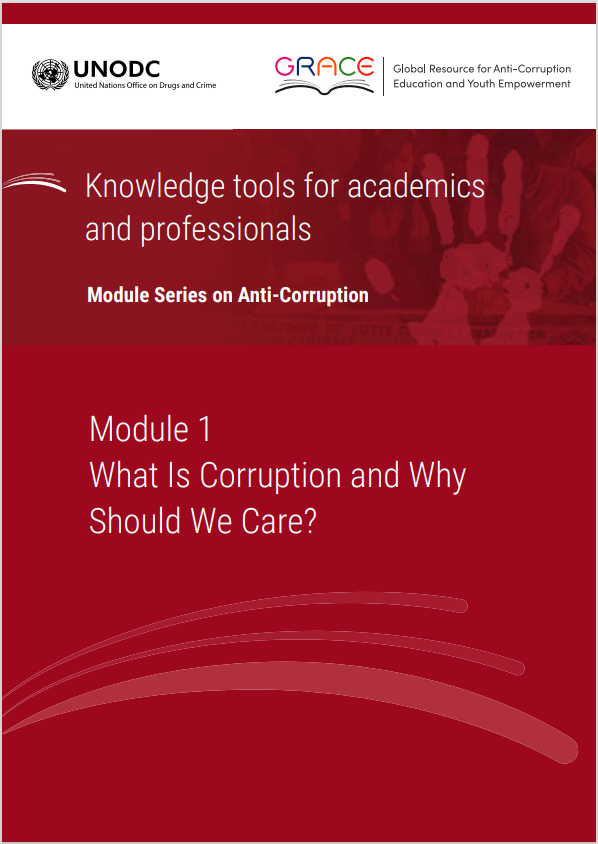This module is a resource for lecturers
Guidelines to develop a stand-alone course
This Module provides an outline for a three-hour class, but there is potential to develop its topics further into a stand-alone course. The scope and structure of such a course will be determined by the specific needs of each context, but a possible structure is presented here as a suggestion
|
Session |
Topic |
Brief Description |
|
1 |
Introduction |
Explain course contents and requirements, conduct Exercise 1, and debrief |
|
2 |
What is corruption? |
Examine the crimes listed in the United Nations Convention against Corruption (UNCAC) and general definitions |
|
3 |
The intuitive effects of corruption |
Conduct Exercise 2 and discuss what are listed as the "obvious or intuitive effects of corruption" in this Module |
|
4 |
The surprising effects of corruption |
Discuss the less obvious effects of corruption listed in this Module |
|
5 |
Understandings of corruption (1): History, morality, and culture |
Discuss the historical, moral, and cultural approaches to corruption |
|
6 |
Understandings of corruption (2): Politics, economics, and law |
Discuss the political, economic, and legal approaches to corruption |
|
7 |
Measuring corruption |
After exploring an example of a corruption ranking, raise the question, "What explains the differing levels of corruption seen across the world?" |
|
8 |
Explaining corruption |
Examine competing explanatory theories, including those focused on: history and culture, economic systems, and political and legal systems (the descriptive theories in sessions 5 and 6 also have explanatory components, which are examined here). Why are some countries often seen as being relatively corruption-free, while others are generally in the middle or lower end of corruption rankings? |
|
9 |
Responding to corruption: theory and civil society |
The lecturer examines the prescriptive implications of the various theories explored in sessions 5-8 in addition to anti-corruption initiatives sponsored by NGOs |
|
10 |
National responses to corruption: legal reforms |
In addition to changes to substantive laws and institutions, the lecturer might wish to elaborate on how social movements have put pressure on governments to take such actions |
|
11 |
Regional and global responses to corruption |
This final part of the course would focus on a sample of regional initiatives and UNCAC |
|
12 |
Conclusion |
 Next:
Appendix
Next:
Appendix
 Back to top
Back to top
